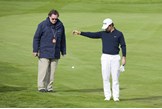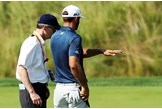The new 2019 Rules; What they mean to you
Published:
Let’s be honest, the Rules of Golf can be a bit of a nightmare. How many times to you see tour pros call over a ref to help them get a ruling? If those guys don’t know the rules – and they’re playing EVERY DAY – what hope has a 15-handicapper who plays twice a month?
In order to make the Rules of Golf a bit simpler – and therefore make golf more attractive to new players – the R&A and its American equivalent the USGA have unveiled the new Rules of Golf, to be implemented January 1, 2019.
They finalised golf’s new Rules this month after an extensive review that included a request for feedback from the global golf community on the proposed changes.
The process to modernise the Rules began in 2012 and was initiated to ensure that they are easier to understand and apply for all golfers and to make the game more attractive and accessible for newcomers.
While the majority of proposed Rules remain intact in the final version, several important changes to the initial proposals and further clarification of many Rules were incorporated. The most significant adjustments made following review of the feedback received from golfers around the world include:
Dropping procedure
When taking relief (from an abnormal course condition or penalty area, for example), golfers will now drop from knee height. This will ensure consistency and simplicity in the dropping process while also preserving the randomness of the drop. (Key change: the proposed Rules released in 2017 suggested dropping from any height).
Measuring in taking relief
The golfer’s relief area will be measured by using the longest club in his/her bag (other than a putter) to measure one club-length or two club-lengths, depending on the situation, providing a consistent process for golfers to establish his/her relief area. (Key change: the proposed Rules released in 2017 suggested a 20-inch or 80-inch standard measurement).
Removing the penalty for a double hit
The penalty stroke for accidentally striking the ball more than once in the course of a stroke has been removed. Golfers will simply count the one stroke they made to strike the ball. (Key change: the proposed Rules released in 2017 retained the existing one-stroke penalty).
Balls Lost or Out of Bounds
Alternative to Stroke and Distance: A new Local Rule will now be available in January 2019, permitting committees to allow golfers the option to drop the ball in the vicinity of where the ball is lost or out of bounds (including the nearest fairway area), under a two-stroke penalty. It addresses concerns raised at the club level about the negative impact on pace of play when a player is required to go back under stroke and distance. The Local Rule is not intended for higher levels of play, such as professional or elite level competitions. (Key change: this is a new addition to support pace of play)
David Rickman, Executive Director – Governance at The R&A, said: “We are pleased to be introducing the new Rules of Golf after a collaborative and wide-ranging review process which has embraced the views of golfers, Rules experts and administrators worldwide. We believe that the new Rules are more in tune with what golfers would like and are easier to understand and apply for everyone who enjoys playing this great game.”
Major proposals introduced in 2017 that have already been incorporated into the modernized Rules include:
Elimination or reduction of “ball moved” penalties
There will be no penalty for accidentally moving a ball on the putting green or in searching for a ball; and a player will not be responsible for causing a ball to move unless it is “virtually certain” that he or she did so.

Relaxed putting green rules
There will be no penalty if a ball played from the putting green hits an unattended flagstick in the hole; players may putt without having the flagstick attended or removed. Players may repair spike marks and other damage made by shoes, animal damage and other damage on the putting green and there is no penalty for merely touching the line of putt.
Relaxed rules for “penalty areas” (currently called “water hazards”)
Red- and yellow-marked penalty areas may cover areas of desert, jungle, lava rock, etc., in addition to areas of water; expanded use of red penalty areas where lateral relief is allowed; and there will be no penalty for moving loose impediments or touching the ground or water in a penalty area.

Relaxed bunker rules
There will be no penalty for moving loose impediments in a bunker or for generally touching the sand with a hand or club. A limited set of restrictions (such as not grounding the club right next to the ball) is kept to preserve the challenge of playing from the sand; however, an extra relief option is added for an unplayable ball in a bunker, allowing the ball to be played from outside the bunker with a two-stroke penalty.
Relying on player integrity
A player’s “reasonable judgment” when estimating or measuring a spot, point, line, area or distance will be upheld, even if video evidence later shows it to be wrong; and elimination of announcement procedures when lifting a ball to identify it or to see if it is damaged.
Pace-of-play support
Reduced time for searching for a lost ball (from five minutes to three); affirmative encouragement of “ready golf” in stroke play; recommending that players take no more than 40 seconds to play a stroke and other changes intended to help with pace of play.



